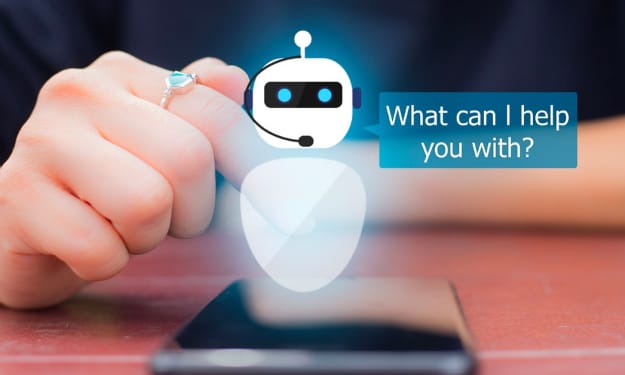The Future of EdTech
Transforming Classrooms with Technology
#### Introduction
Education technology (EdTech) is rapidly changing the landscape of learning and teaching. As classrooms evolve from traditional chalkboards and textbooks to digital whiteboards and e-books, educators and students alike are experiencing a transformative shift. This article explores the latest advancements in EdTech, their impact on education, and what the future holds for this dynamic field.
#### Digital Classrooms
**The Shift to Digital:**
The traditional classroom, characterized by rows of desks and a teacher at the front, is giving way to a more dynamic and interactive learning environment. Digital classrooms leverage a variety of technological tools to enhance the learning experience. Interactive whiteboards, for instance, allow teachers to present information in engaging ways, using multimedia content and interactive lessons.
**Tools and Technologies:**
Tablets and laptops have become essential in modern education, providing students with access to a wealth of information and learning resources at their fingertips. These devices support a variety of educational apps that cater to different learning styles and subjects. Furthermore, cloud-based platforms like Google Classroom and Microsoft Teams facilitate seamless communication and collaboration between students and teachers, making it easier to assign, submit, and grade work.
**Benefits and Challenges:**
The benefits of digital classrooms are manifold. They offer greater flexibility, enabling students to learn at their own pace and access materials anytime, anywhere. However, the transition also presents challenges, such as ensuring equitable access to technology for all students and addressing privacy and security concerns related to online learning.
#### Adaptive Learning Systems
**Personalized Learning:**
Adaptive learning systems are at the forefront of the EdTech revolution, offering personalized learning experiences tailored to individual student needs. Powered by artificial intelligence (AI), these systems analyze student performance data to identify strengths and weaknesses, adjusting the curriculum accordingly to optimize learning outcomes.
**Key Features:**
These systems provide real-time feedback and customized content, allowing students to focus on areas that require improvement while progressing through subjects they excel in. Examples of adaptive learning platforms include DreamBox for math and Knewton for a range of subjects. These platforms adapt lessons based on student responses, ensuring a personalized learning path.
**Impact on Education:**
The impact of adaptive learning systems is profound. They enable differentiated instruction, catering to diverse learning abilities and styles within a single classroom. This approach not only enhances student engagement but also improves academic performance by addressing individual learning gaps more effectively than traditional methods.
#### Virtual and Augmented Reality
**Immersive Learning:**
Virtual Reality (VR) and Augmented Reality (AR) are revolutionizing how students interact with educational content. These technologies create immersive learning experiences that bring abstract concepts to life, making them more tangible and understandable.
**Applications in Education:**
VR allows students to explore historical sites, dive into the depths of the ocean, or even travel through the human body, providing experiences that would be impossible or impractical in a traditional classroom. AR, on the other hand, overlays digital information onto the real world, enhancing activities such as science experiments and architectural design.
**Case Studies:**
Several educational institutions have successfully integrated VR and AR into their curricula. For example, medical schools use VR simulations to train students in complex surgical procedures, while elementary schools employ AR apps to teach subjects like astronomy and geography in a more engaging way. These technologies not only make learning more enjoyable but also improve retention and understanding by providing hands-on experiences.
#### Remote Learning
**The Rise of Online Education:**
The COVID-19 pandemic accelerated the adoption of remote learning, highlighting both its potential and its challenges. Online education platforms, such as Coursera, Khan Academy, and edX, have made quality education accessible to a global audience.
**Benefits of Remote Learning:**
Remote learning offers several advantages, including flexibility, accessibility, and the ability to cater to different learning styles. Students can learn at their own pace and revisit materials as needed. Additionally, remote learning breaks down geographical barriers, enabling students from remote or underserved areas to access quality education.
**Challenges and Solutions:**
Despite its benefits, remote learning also poses challenges, such as the digital divide, lack of face-to-face interaction, and difficulties in maintaining student engagement. Addressing these issues requires a multifaceted approach, including providing necessary technology and internet access to all students, incorporating interactive and collaborative elements into online courses, and offering support systems to help students stay motivated and connected.
#### Data Analytics in Education
**Harnessing the Power of Data:**
Data analytics is transforming education by providing insights that help educators make informed decisions. By analyzing data on student performance, attendance, and engagement, educators can identify trends, predict outcomes, and tailor instruction to meet individual needs.
**Applications of Data Analytics:**
Educational institutions are using data analytics in various ways, such as monitoring student progress, identifying at-risk students, and evaluating the effectiveness of teaching strategies. Learning management systems (LMS) like Canvas and Blackboard collect and analyze data to provide actionable insights.
**Privacy and Ethical Considerations:**
While data analytics offers significant benefits, it also raises privacy and ethical concerns. Ensuring the security of student data and using it responsibly is paramount. Educational institutions must implement robust data protection measures and establish clear policies on data use and privacy.
### Inclusive Education: Strategies for Supporting Diverse Learners
#### Introduction
Inclusive education is a fundamental principle that aims to provide all students, regardless of their background or abilities, with equal access to quality education. This article explores various strategies and practices that promote inclusivity in educational settings, highlighting the importance of creating an environment where every student can thrive.
#### Universal Design for Learning (UDL)
**Concept and Principles:**
Universal Design for Learning (UDL) is an educational framework that aims to make learning accessible to all students by providing multiple means of representation, engagement, and expression. UDL recognizes that students learn in diverse ways and seeks to accommodate these differences through flexible instructional methods.
**Implementation in the Classroom:**
Implementing UDL involves offering various ways to present information, such as through visual, auditory, and kinesthetic means. It also includes providing different ways for students to demonstrate their knowledge, whether through written assignments, oral presentations, or creative projects. By doing so, UDL ensures that all students, including those with disabilities, have equal opportunities to succeed.
**Benefits of UDL:**
The benefits of UDL extend beyond students with disabilities. By addressing the diverse needs of all learners, UDL creates a more inclusive and supportive learning environment. It promotes engagement, reduces barriers to learning, and enhances overall academic performance.
#### Special Education
**Integrating Special Needs Students:**
Inclusive education involves integrating students with disabilities into mainstream classrooms while providing the necessary support and resources. This approach ensures that all students have access to the same educational opportunities and fosters a culture of acceptance and respect.
**Supportive Strategies:**
Effective strategies for integrating special needs students include individualized education plans (IEPs), differentiated instruction, and the use of assistive technologies. IEPs outline specific goals and accommodations for each student, ensuring they receive personalized support. Differentiated instruction involves tailoring lessons to meet the diverse needs of students, while assistive technologies, such as speech-to-text software and communication devices, help students overcome learning barriers.
**Challenges and Solutions:**
Integrating special needs students presents challenges, such as limited resources, lack of training for educators, and potential social isolation. Addressing these challenges requires adequate funding, professional development for teachers, and fostering a supportive school community. Collaboration between educators, parents, and specialists is essential to create an inclusive and effective learning environment.
#### Cultural Competence
**Understanding Cultural Competence:**
Cultural competence refers to the ability of educators to understand, respect, and effectively respond to the diverse cultural backgrounds of their students. It involves recognizing and valuing cultural differences, and integrating this awareness into teaching practices.
**Promoting Cultural Competence:**
Training educators to be culturally responsive involves professional development programs that focus on diversity, equity, and inclusion. These programs help teachers develop the skills and knowledge needed to create inclusive classrooms where all students feel valued and respected.
**Culturally Responsive Teaching:**
Culturally responsive teaching practices include incorporating diverse perspectives into the curriculum, using culturally relevant materials, and fostering an inclusive classroom environment. This approach not only supports the academic success of students from diverse backgrounds but also promotes mutual understanding and respect among all students.
#### Gender Equality in Education
**Addressing Gender Bias:**
Gender equality in education involves addressing and eliminating gender biases that can hinder the academic and personal development of students. This includes challenging stereotypes, promoting equal opportunities, and ensuring that all students, regardless of gender, have access to the same resources and support.
**Promoting Gender Equality:**
Strategies for promoting gender equality in education include implementing gender-neutral curricula, encouraging participation in non-traditional fields, and providing mentorship and support programs for underrepresented genders. Schools can also create policies and practices that promote a safe and inclusive environment for all students.
**Impact on Students:**
Promoting gender equality in education benefits all students by creating a more inclusive and supportive learning environment. It helps break down barriers to participation and achievement, empowering students to pursue their interests and goals without limitations imposed by gender stereotypes.
#### Socioeconomic Diversity
**Supporting Low-Income Students:**
Inclusive education also involves supporting students from low-income families, who may face additional barriers to academic success. Providing financial aid programs, access to resources, and community support initiatives can help level the playing field for these students.
**Strategies for Inclusion:**
Schools can implement a variety of strategies to support low-income students, such as providing free or reduced-cost meals, offering after-school programs and tutoring, and ensuring access to necessary school supplies and technology. Community partnerships can also play a vital role in providing additional resources and support.
**Creating an Inclusive Environment:**
Creating an inclusive environment for students from diverse socioeconomic backgrounds involves fostering a sense of belonging and ensuring that all students have the opportunity to succeed. This includes addressing any biases or stigmas associated with socioeconomic status and promoting a culture of inclusivity and respect.
### The Role of Emotional Intelligence in Education
####
Introduction
Emotional intelligence (EI) is increasingly recognized as a critical factor in student success and well-being. This article examines how EI can be integrated into educational curricula and its impact on both academic and personal development.
#### Defining Emotional Intelligence
**Components of EI:**
Emotional intelligence consists of several key components, including self-awareness, self-regulation, motivation, empathy, and social skills. These components are essential for personal and social competence, enabling individuals to understand and manage their emotions, build positive relationships, and navigate social complexities.
**Importance in Education:**
In the educational context, EI plays a crucial role in fostering a positive learning environment, promoting student engagement, and supporting academic achievement. Students with high EI are better equipped to handle stress, resolve conflicts, and collaborate effectively with peers and teachers.
#### Benefits of EI in Education
**Academic Performance:**
Research has shown that students with high EI tend to perform better academically. They are more motivated, resilient, and capable of managing their emotions, which contributes to improved focus, persistence, and overall academic success.
**Social and Emotional Well-being:**
Developing EI also enhances students' social and emotional well-being. It helps them build stronger relationships, navigate social interactions, and cope with challenges and setbacks. This, in turn, contributes to a more positive and supportive school climate.
**Long-term Impact:**
The benefits of EI extend beyond the classroom. Individuals with high EI are more likely to succeed in their careers, maintain healthy relationships, and lead fulfilling lives. By fostering EI in students, educators can help prepare them for future success and well-being.
#### Teaching Emotional Intelligence
**Social-Emotional Learning (SEL) Programs:**
Social-emotional learning (SEL) programs are designed to teach students the skills and competencies associated with EI. These programs typically include lessons on self-awareness, self-management, social awareness, relationship skills, and responsible decision-making.
**Incorporating SEL into the Curriculum:**
Integrating SEL into the school curriculum involves embedding these lessons into everyday activities and interactions. This can be done through dedicated SEL lessons, classroom discussions, role-playing exercises, and mindfulness practices.
**Role of Educators:**
Educators play a vital role in teaching and modeling EI. By demonstrating emotional intelligence in their interactions with students, teachers can create a positive and supportive classroom environment. Professional development programs can help educators develop their own EI and learn effective strategies for teaching SEL.
#### EI for Educators
**Importance of EI for Teachers:**
For educators, emotional intelligence is essential for creating a positive and effective learning environment. Teachers with high EI are better able to manage classroom dynamics, build strong relationships with students, and respond to challenges with empathy and resilience.
**Developing EI in Educators:**
Professional development programs focused on EI can help teachers enhance their emotional and social competencies. These programs may include training on self-awareness, stress management, effective communication, and conflict resolution.
**Impact on Teaching and Learning:**
Educators with high EI are more likely to foster a positive classroom climate, promote student engagement, and support the social-emotional development of their students. By prioritizing EI, schools can create a more inclusive and supportive learning environment for all.
#### Measuring Emotional Intelligence
**Assessment Tools:**
Several tools and assessments are available to measure emotional intelligence in students and educators. These tools can provide valuable insights into individual strengths and areas for development, helping to inform teaching practices and support strategies.
**Using Data to Inform Practices:**
Data from EI assessments can be used to tailor SEL programs and interventions to meet the specific needs of students. By tracking progress and outcomes, educators can continuously improve their approaches to teaching and promoting emotional intelligence.
**Challenges and Considerations:**
While measuring EI can provide valuable insights, it is important to approach assessments with caution. Emotional intelligence is a complex and multifaceted construct, and assessments should be used as one of many tools to support students' social-emotional development.
### Conclusion
As education continues to evolve, the integration of technology, inclusive practices, and emotional intelligence will play a crucial role in shaping the future of learning. By embracing these advancements and strategies, educators can create more engaging, supportive, and effective learning environments that empower all students to succeed. The future of education lies in our ability to adapt, innovate, and prioritize the diverse needs of every learner, ensuring that all students have the opportunity to thrive academically, socially, and emotionally.
About the Creator
Local Man
I am a dedicated writer known for my versatility and creativity. With a strong passion for storytelling, engaging content across a variety of genres, including articles, blogs, and copywriting.
Enjoyed the story? Support the Creator.
Subscribe for free to receive all their stories in your feed. You could also pledge your support or give them a one-off tip, letting them know you appreciate their work.







Comments (1)
Laugh out loud!